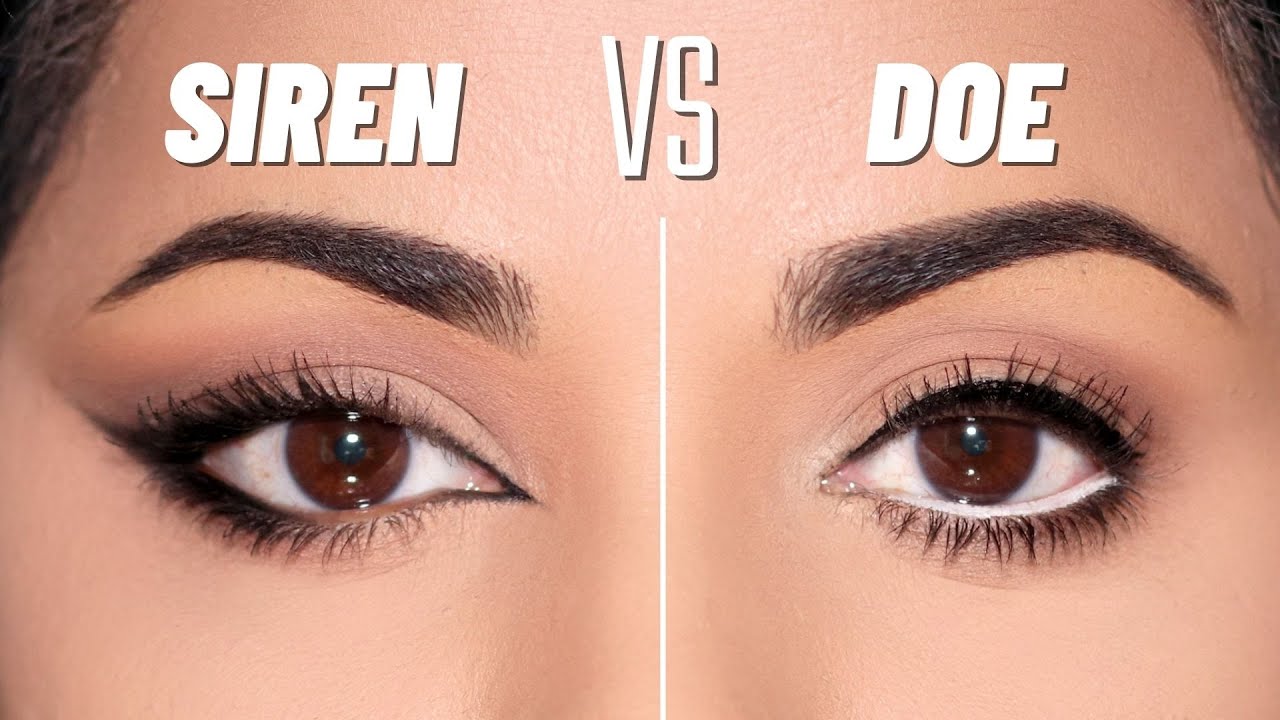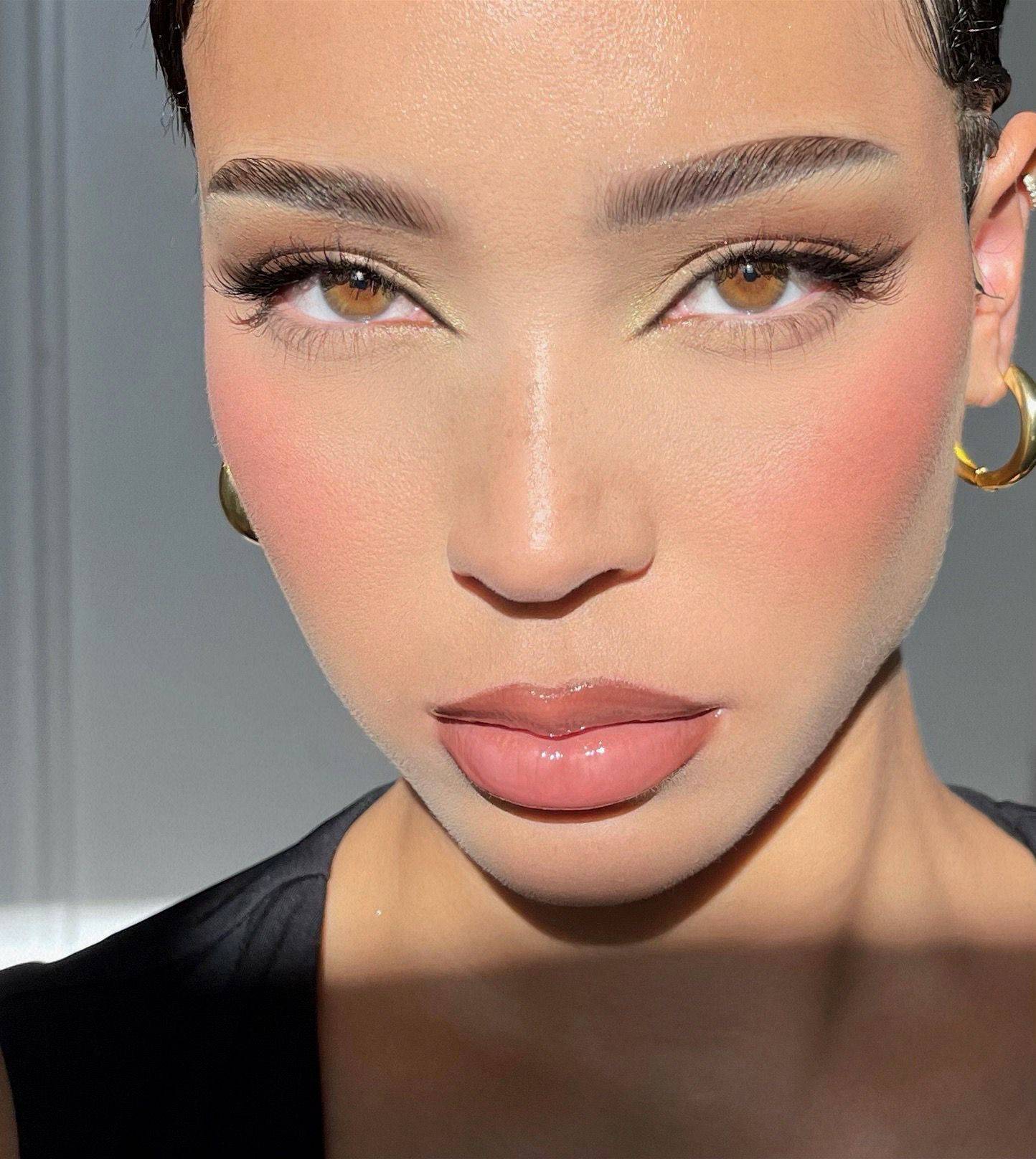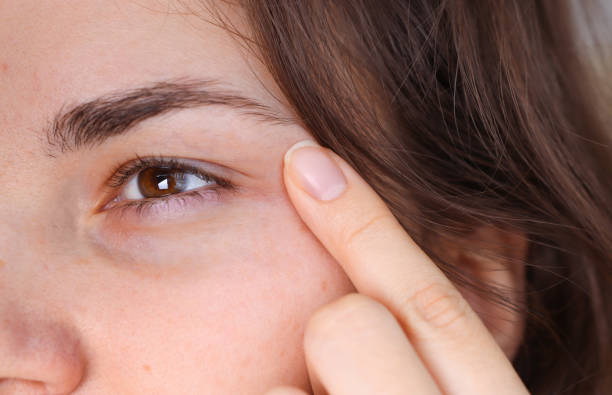Forget the dance crazes, TikTok has a new obsession: eyes! And not just any eyes, we’re talking about two trending eyeliner techniques taking the platform by storm – siren eyes and doe eyes. These contrasting styles offer completely different vibes. One makes you look like a sultry siren, the other a wide-eyed innocent. So, which will you choose? Dive into the world of eyeliner trends and discover the battle between siren eyes versus doe eyes!

WHAT ARE THE DIFFERENCES BETWEEN SIREN EYE AND DOE EYE?
Siren eyes and doe eyes are rival eyeliner techniques on TikTok, each creating dramatically different eye shapes.
Siren eyes are all about smoldering seduction. They achieve this with dark, winged eyeliner that extends outward and slightly upward, mimicking a cat-eye. Smokey eyeshadow often complements this look, further elongating and narrowing the eye.
Doe eyes, on the other hand, aim for a wide-eyed, innocent effect. Light eyeshadows and nude or light-colored eyeliner are used to open up the eye area, making them appear bigger and rounder. Think youthful exuberance instead of mysterious allure.
HOW DO I KNOW IF I AM SUITABLE FOR THE DOE EYE OR SIREN EYE?
Picking between doe eye and siren eye makeup boils down to your desired look and personal style.
Doe eyes are perfect for a youthful and innocent vibe. They make your eyes appear bigger and brighter, ideal for daytime wear or a softer look. This style is particularly flattering for those with round or smaller eyes, and can soften angular features. If you favor a more natural or minimalist approach to makeup, and have a girly or casual fashion sense, then doe eyes are your match.
On the other hand, siren eyes exude drama and sultriness. They elongate and sharpen the eyes, creating a captivating effect. This look shines for evening events or when you want to make a bold statement. Almond-shaped or naturally elongated eyes benefit most from siren eyes. It can also add definition to hooded eyes or balance rounder features. If your style leans towards edgy, glamorous, or high-fashion, and you have the patience to perfect the sharp lines, then siren eyes are for you.
HOW TO GET A DOE EYE MAKEUP LOOK

Get ready to captivate with a doe-eyed gaze! This look is all about soft, romantic eyes, and the good news is you can achieve it with just a few products.
PREP THE LIDS
Start with a matte base: Apply a matte eyeshadow close to your skin tone across your eyelid. Think soft and natural.
Define the crease: Use a matte bronzer to gently add depth in the crease of your eye. Remember, keep the shape rounded at the outer edges – no sharp wings here! This creates the illusion of bigger eyes.
LINE AND LASH FOR DRAMA
Liner magic (with a secret weapon): Lining with liquid eyeliner can be tricky. Here’s a pro tip: first, use a brown eyeshadow to create the thin eyeliner shape you want. It should be thin on the inner corner and gradually thicken towards the outer eye. Stop the liner at the end of your lashes, no extending the wing. Then, go over the eyeshadow with your liquid eyeliner for a precise and defined line.
Fluttery Lashes: Top off your doe-eyed look with a pair of fluttery false lashes. Opt for a natural style from a collection like “Basic Boss Lashes” to complete the soft effect.
BRIGHTEN AND FINISH
Line the waterline: Use a nude or white eyeliner pencil to line your lower waterline. This opens up the eye area and adds brightness.
Under-eye definition: Dust a little bit of matte bronzer under your lower lash line for a subtle definition. Then, finish with a touch of mascara on your bottom lashes.
Pro Tip: For an extra eye-opening effect, dab a touch of highlighter on the inner corner of your eyes.
THE FINAL TOUCH
With your doe-eyed masterpiece complete, apply your favorite lip color and you’re ready to take on the day (or night) with captivating eyes!
HOW TO GET A SIREN EYE MAKEUP LOOK

Ready to trade doe-eyed sweetness for sultry siren vibes? This look is all about intensity and drama, making your eyes appear elongated and captivating.
DITCH THE BASE SHADOW
Skip the light wash: Unlike doe eyes, siren eyes don’t need a light-colored base shadow. We’re going for a bolder look!
SCULPT AND SMOKE
Elongate with bronzer: Apply a touch of matte bronzer in the crease, focusing on extending the shape outwards to create the illusion of longer eyes.
Smoke it out: Use a darker brown eyeshadow to smudge and smoke out the outer portion of your lash line. This creates a sultry, diffused effect.
LINE FOR INTENSITY
Darken the outer corners: Line only the outer two-thirds of your upper lash line with a dark brown pencil, shadow, or liquid liner. Aim for a highly pigmented product for maximum impact. Here’s a pro tip: imagine a ruler extending from your outer lash line towards your temple. Mimic that angle with your liner, creating a sharp wing. Then, subtly flick the liner inwards towards your tear duct to create an angular shape.
LASHES WITH A TWIST
Half lash magic: Apply mascara, then add a dramatic touch with false eyelashes. However, instead of a full strip, cut them in half and apply only to the outer third of your lash line. This creates the signature cat-eye effect while maximizing your lash product!
FIERCE FINISH
With your siren eyes mesmerizing everyone around you, all you need is a swipe of your favorite lipstick to complete the look. Now you’re ready to turn heads and unleash your inner siren!
FAQ
1. What makeup look goes best with doe eyes?
Doe eyes pair well with natural, girly, or minimalist styles.
2. What makeup look goes best with siren eyes?
Siren eyes complement edgy, glamorous, or high-fashion looks.
3. Is doe eye makeup easier than siren eye makeup?
Generally, yes. Doe eyes require simpler eyeliner techniques.
4. What are some key products for a doe eye look?
Light eyeshadow, nude or light eyeliner, brown eyeshadow (for shaping), mascara, and false lashes (optional).
5. What are some key products for a siren eye look?
Darker brown eyeshadow, black eyeliner (pencil, shadow, or liquid), mascara, and false lashes (cut in half).
6. Can I wear glasses with either look?
Absolutely! Just adjust the eyeliner slightly to frame your eyes behind the glasses.
CONCLUSION
So, siren eye or doe eye? The truth is, there’s no single winner in this battle of eyeliner trends. The best choice depends on the effect you want to achieve and your own eye shape and personal style. Doe eyes offer a youthful innocence, while siren eyes exude drama and sultriness. Why not experiment with both and see which one makes you feel most confident and captivating? After all, makeup is all about having fun and expressing yourself! With a little practice, you can master both techniques and unleash your inner doe or siren whenever the mood strikes.



